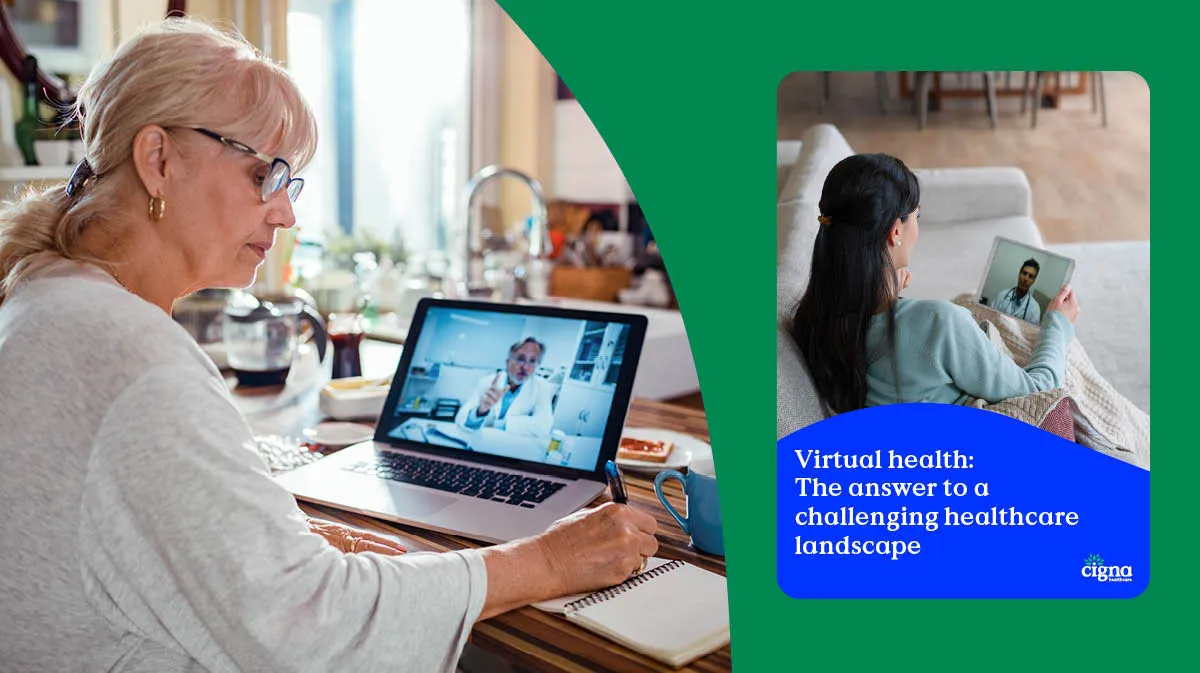Health is one of the most valuable things we have. Enabling us to enjoy life, form relationships, create memories and earn a living. And when our health is under threat, we realize that nothing else matters.
The pandemic has given us the opportunity reflect on exactly how important our health is. As a result, many of us are taking a holistic view of managing our own Whole Health and planning for a better future.
The same could be said for employers. They have been reminded of their responsibility to keep their employees not only healthy and safe, but also productive, engaged and inspired. With employees prioritizing their health and well-being more than ever before, employers need to respond with support that actively helps them to lead happier, healthier lives. COVID-19 is a super-charged health crisis that requires employers to move forward with a renewed focus and determination.
It sounds simple enough, right? But, employers are faced with many challenges which can make it difficult to provide the right support. Although, nothing is impossible!
Supporting employees with a Whole Health strategy
So, what do employers need to take into account when it comes to supporting employees and looking after their Whole Health?
- Employee’s expectations have and continue to change rapidly and this will determine the landscape of the current and future workforce. The traditional working model has changed. Monday – Friday, 9am-5pm in the office has been replaced with flexible and hybrid working. Working patterns have adapted to work around busy lives and schedules and there’s a lot more come and go between employers and employees. We’re now gradually returning to the office and employees are looking for their employer to offer the same flexibility they’ve recently become accustomed to. They are looking for the right balance between working from home and working in the office. Workplace policies and culture need to be aligned accordingly.
- Employers also need to think about employee engagement and the unique culture of their organisation, especially when people are rarely meeting each other face to face. Engaged employees can lead to higher employee retention, improved productivity and lower absenteeism. Improving communication is a fundamental step to take to increase engagement. Open up the channels of communication between senior leaders and employees, ensuring a two-way conversation. Senior managers should always lead by example and be approachable and personable.
- Employers are now competing for talent from around the world, there are more options available to people because, theoretically, they can work from anywhere. When it comes to recruitment and retention, it’s no longer just about salary and perks of the job. Attracting and retaining top talent means offering current and potential employees flexibility, safety, transparency, a robust well-being package and the best technology and tools needed for the job. Employers have the opportunity to rethink the importance of their most precious asset – their people. Strategically investing smartly in human capital yields better engagement, longer relationships with employees, more productivity and higher returns. When workers are happy and productive, retention becomes much less of an issue.
- Get to know your team! A comprehensive understanding of workplace demographics helps employers with the vital insights they need when supporting employees. Employee surveys or health risk assessments will help identify the types of people that make up the workforce and uncover meaningful differences between groups of employees. This will enable employers to identify the key issues affecting employees and pinpoint areas where additional support is needed or would be beneficial.
- Last, but certainly not least, employee health and well-being should be a strategic priority. We already know how important health is on an individual level. Employees are looking for comprehensive healthcare for themselves and their loved ones - healthcare that is affordable and that they perceive as good value. This is helped by the rise of virtual healthcare, giving people access to more information, and better and faster access to a range of services that make their lives easier – effectively putting them in the driving’ seat. Virtual healthcare also presents exciting new opportunities to bring health services into each and every living room – and enhance the way in which people can monitor and manage their personal health and well-being. Making healthcare simple, convenient and accessible helps employees recognise the value of healthcare benefits. It strengthens their commitment to the organisation and improves engagement and productivity.
Expectations have changed and it’s important that healthcare offerings evolve to meet them. Employee health and well-being offerings are no longer a “nice to have” employee benefit. It is a business imperative and is rapidly becoming a boardroom conversation. Once these strategies are put in place, employees are more likely to feel aligned with the mission, vision and values of the company, and offer in return higher levels of engagement and commitment to their employer.
Why Whole Health Matters
Cigna’s Whole Health vision is rethinking and reimagining the future of healthcare delivery. We recognise that someone’s health isn’t just impacted by their individual physical or mental health situation. It’s also determined by how they work, live and plan. Whole Health from Cigna Europe meet modern customer needs using cutting edge technology and solutions to improve everyone’s overall health. It expands our service to support people in addressing the many stressors that occur in their immediate environment – and ultimately impact their health and well-being.
If, like me, you believe that we must support employees to improve their overall Whole Health, you’ll also know how important it is to take a holistic view on health, and tangible initiatives to support the many health challenges people face – not just your current employees, but your future ones too. And you’ll agree it’s hugely important to drive change and deliver healthcare innovations that connect people with the best care, at the right time, and in the right place. Because the real purpose of healthcare is to help people live better lives. After all, our health is everything.


